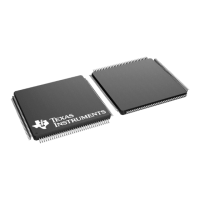PWM Review
7 - 4 TMS320F2837xD Microcontroller Workshop - Control Peripherals
Desired output currents or voltages are known
Power switching devices are transistors
Difficult to control in proportional region
Easy to control in saturated region
PWM is a digital signal ⇒ easy for MCU to output
PWM approx.
of desired
signal
DC Supply
Desired
signal to
system
?
DC Supply
Unknown Gate Signal Gate Signal Known with PWM
PWM
Why use PWM with Power
Switching Devices?
Power switching devices can be difficult to control when operating in the proportional region, but
are easy to control in the saturation and cutoff regions. Since PWM is a digital signal by nature
and easy for an MCU to generate, it is ideal for use with power switching devices. Essentially,
PWM performs a DAC function, where the duty cycle is equivalent to the DAC analog amplitude
value.

